Malheureusement, le contenu de cette page n'est pas actuellement disponible dans la langue sélectionnée.

The OKR acronym stands for Objectives and Key Results. It’s a management and planning process, intended to help businesses and teams keep their efforts focused on their major overarching Objectives and avoid getting overwhelmed by the minutiae. Let’s see how to do OKRs with KeepSolid Goals - the best OKR management tool!
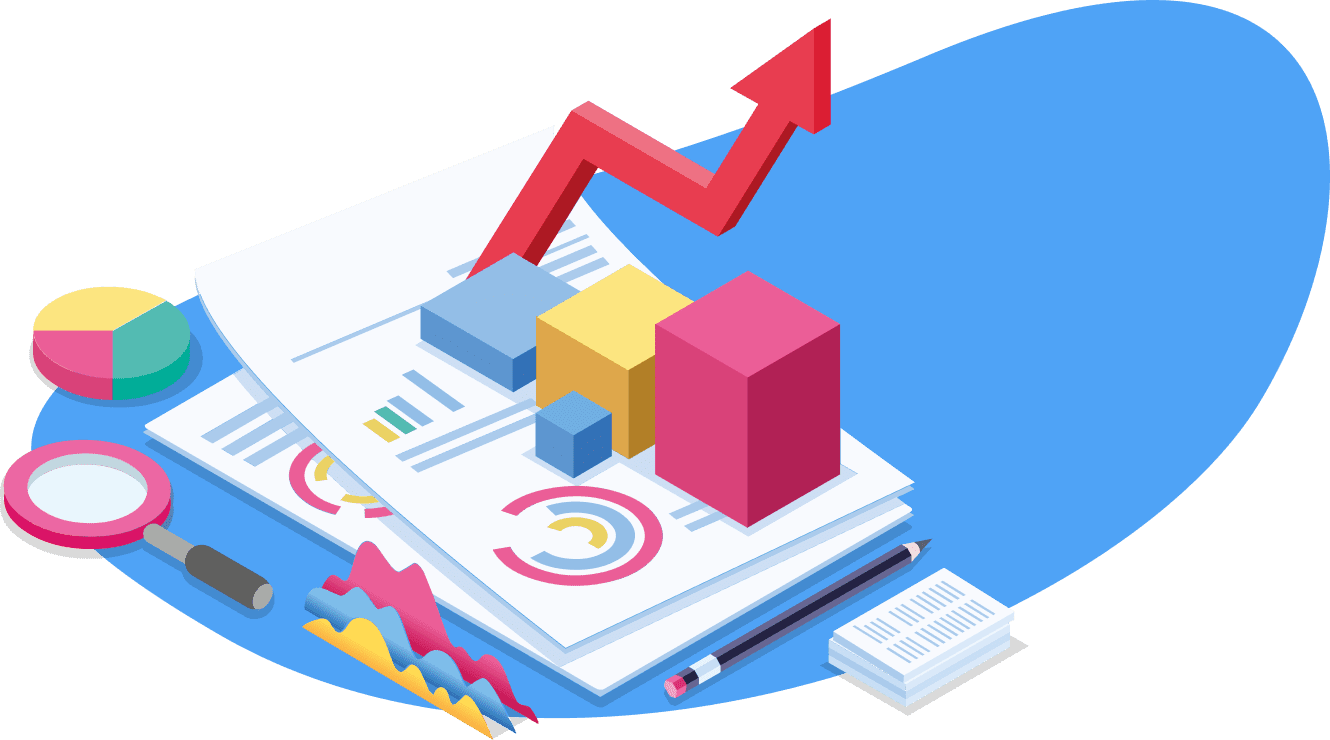
Definition and Examples of Company Objectives and Key Results
As part of the OKR process, a manager or leader should set an Objective (the big goal of their organization) and tie it to a few Key Results (sub-goals that must be completed to reach the Objective). OKR management tools must offer a distinct set of features to come even close to the title of the best OKR software. But before we explore how to implement OKRs with KeepSolid Goals, here are some company OKR examples for various departments.
Objective: Grow our business
Key results:
- Reach $90 Million in Sales
- Achieve 80% year-to-year sales growth
- Increase the average deal size by 20%, including upsells
- Reduce annual churn rate to 7%
Objective: Get marketing qualified leads (MQLs)
Key Results:
- Get 200 MQLs via email marketing
- Get 150 MQLs via SEO-optimization
- Get 100 MQLs via Google Ads
- Get Net-New Unique leads (NNULs) via Account-Based Marketing
Objective: Increase brand awareness
Key Results:
- Conduct 10 meetings/calls with industry influencers
- Conduct 25 media meetings/calls by the end of this year
- Secure 3 speaking spots at the Annual Industry online conference
Objective: Develop a new customer community
Key Results:
- Following best practices, develop a new Customer Community Strategy
- Turn at least 30% of our customers into community members
- Publish 50 articles this quarter and get 7,000+ page visits
Objective: Strengthen our corporate culture
Key results:
- Secure an average employee satisfaction score of 7+
- Establish a continuous two-way feedback loop within the company via biweekly surveys
- Launch the new mentorship program by the end of the year
Objective: Launch a new product
Key Results:
- Launch the new product website
- Provide technical product specs in collaboration with PR
- Prepare a pre-launch update for partners and customers
- Prepare product datasheets, sales enablement info, and feature briefs
Objective: Develop our reps into a great sales team
Key Results:
- Review our onboarding process
- Establish regular weekly sales coaching
- Improve our training based on training companies experience
- Establish regular monthly anonymous SDRs and AEs surveys
Objective: Launch a new product architecture
Key Results:
- Get X story points contributed by the engineering team
- Have QA design 4 product tests
- Finish data migration and update our database
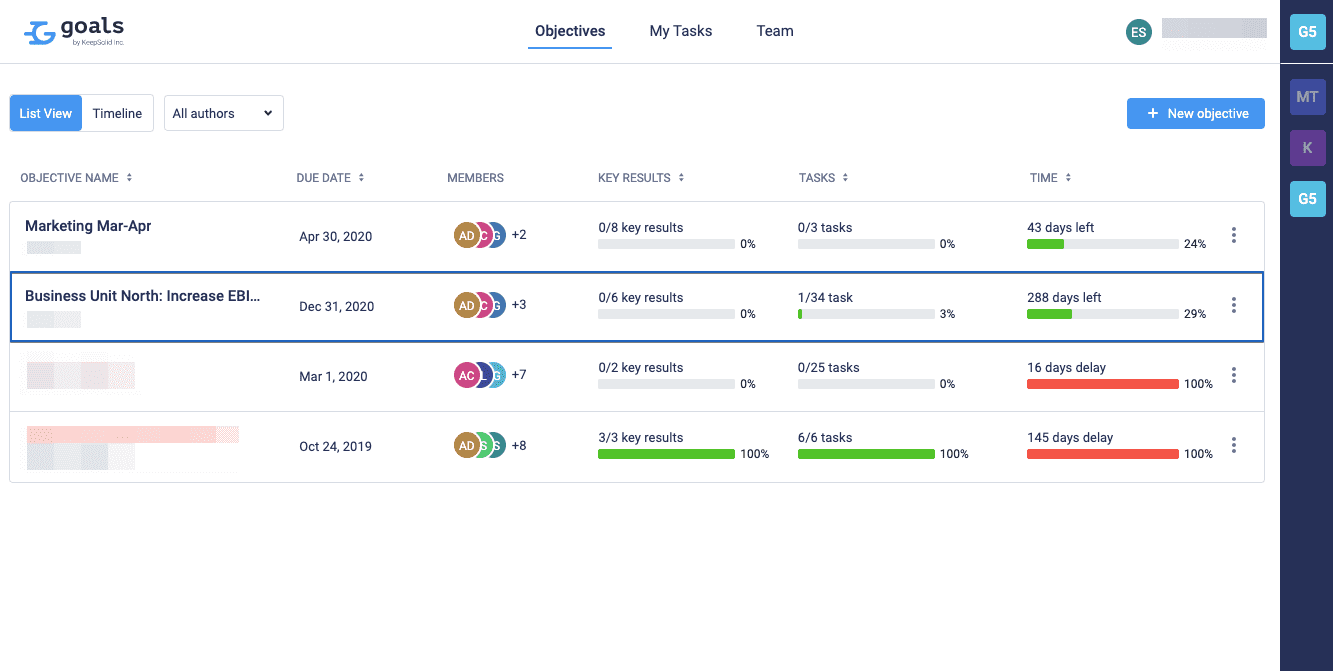
Objective is the major goal that you want your organization to achieve, the destination at which all your activities will be directed. Your company may be focused on reaching a certain level of profits, or releasing the new product, or improving your customer service. Whatever it is, your Objective should be global, overarching, and not overly-specific.

Key Results are your sub-goals. They are smaller in scale and more specific than Objectives. And most importantly, they must be directly related with the Objective you’ve set at step 1. Key Results show what you must achieve in order to reach your Objective. So, if your organization’s Objective is to launch the new product, examples of company OKRs would be to run a bunch of customer interviews and conduct a training session on the new product for your teams.
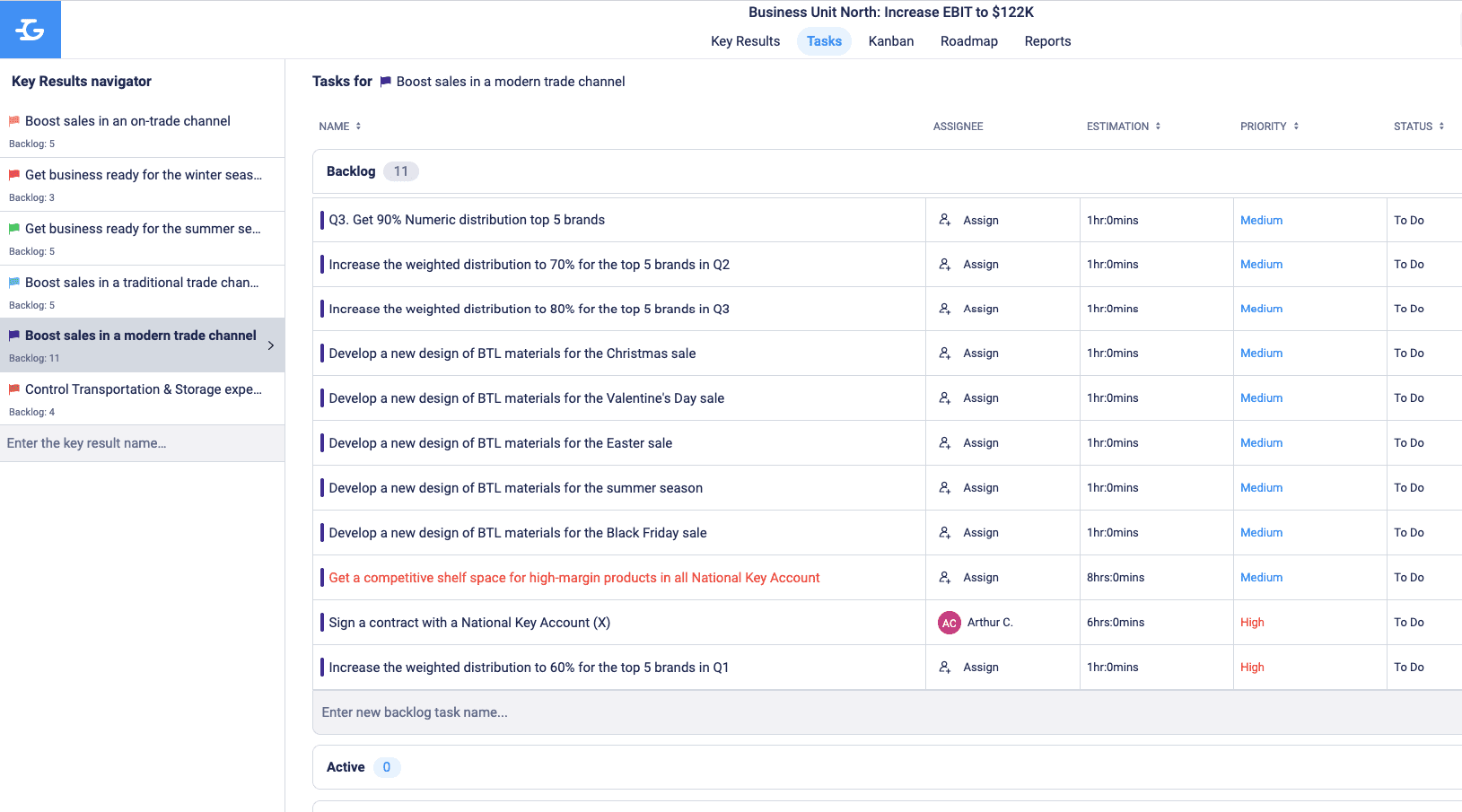
With your Objective and Key Results figured out, decide on your Tasks. A Task is an activity required to reach a Key Result. So, like Key Results are always associated with an Objective, every Task needs to be related to a specific Key Result. So, for a Key Result “run x customer interviews”, Tasks would be to decide what information you wish to learn, prepare the relevant interview content, and send interview invites to customers via selected channels.
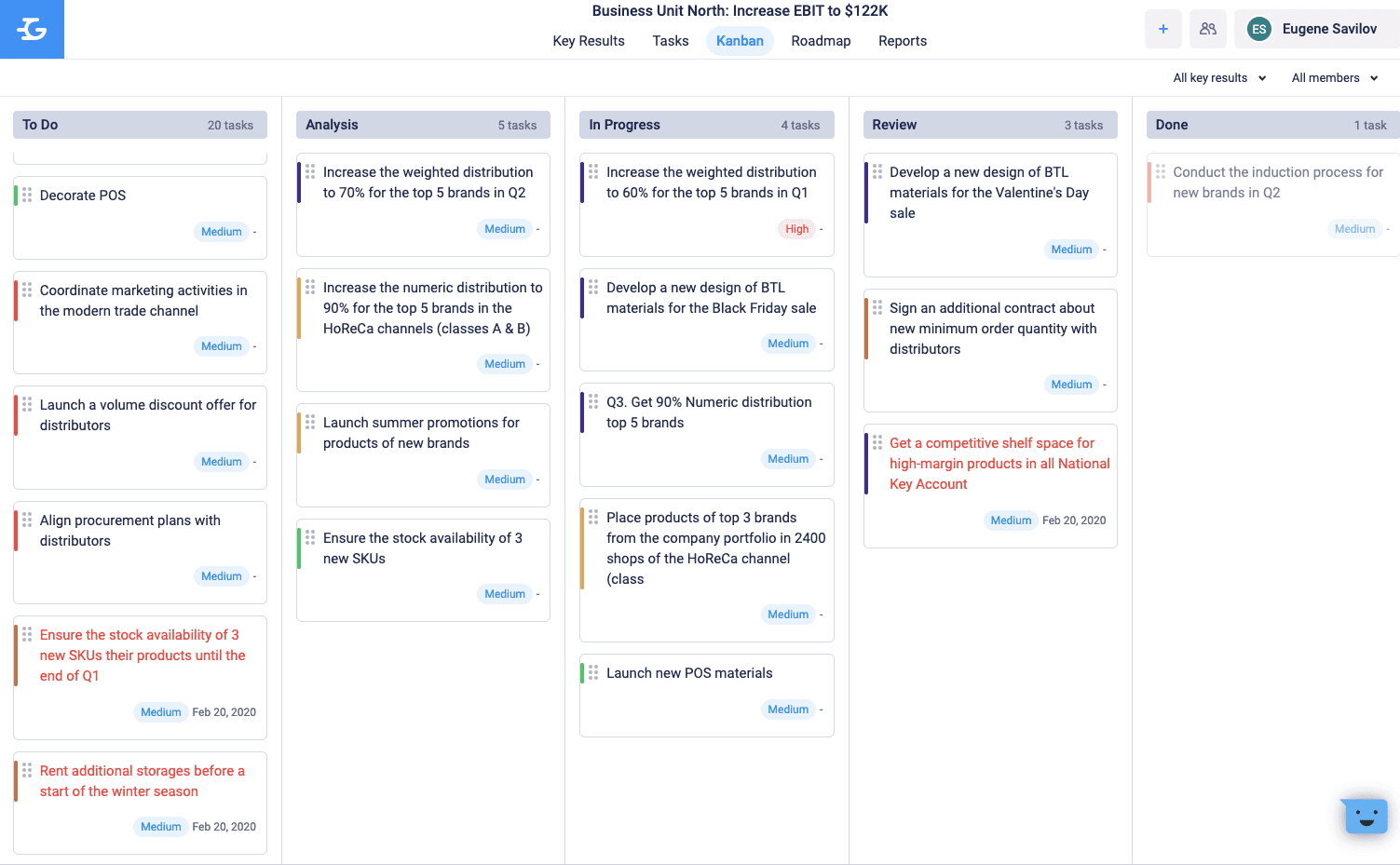
At this point, you’ve determined your Objective, Key Results, and Tasks. Now it’s time to put all that in place. This is where best OKR software like KeepSolid Goals really shines. You will need proper tools to manage all aspects of your OKR process, for instance:
- Mind map and timeline to present your whole action plan in a visually clear and informative way
- Sprints and Kanban boards for Agile task management
- Reports to monitor your company’s progress towards your Objective and business performance in general
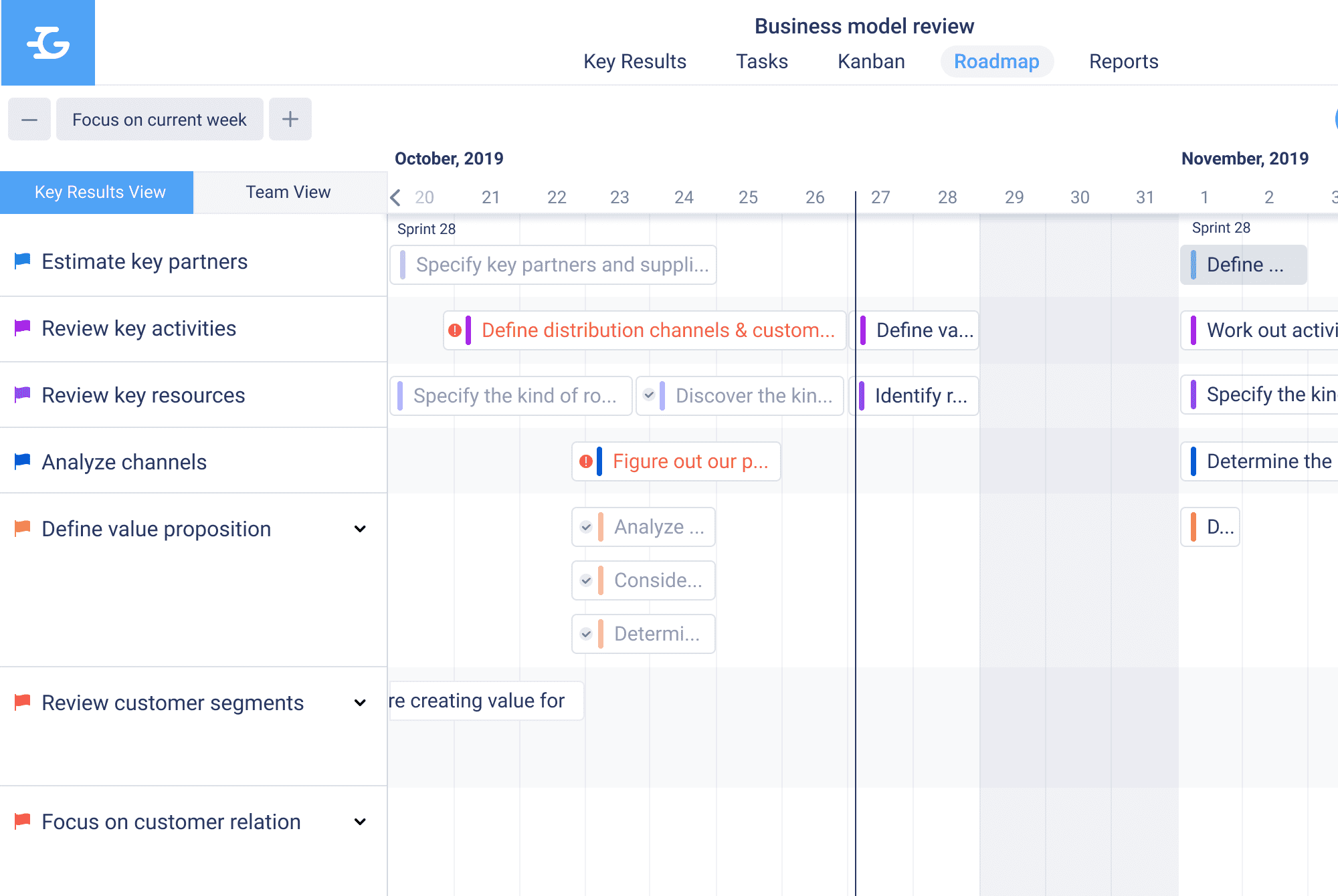
The market is evershifting, and so you want to keep your business plans flexible and relevant. To keep up with the market, track business trends, take advantage of arising opportunities, and look out for potential problems. Once again, a good OKR app like KeepSolid Goals should come in handy at this step, allowing for convenient and efficient plan management features:
- Updating your Objectives and Key Results from any screen, in a few clicks, with all relevant information available
- Managing your teams, adding new due Tasks and assigning them to relevant team members
- Reviewing and redefining the set KPIs to better fit the shifting market conditions
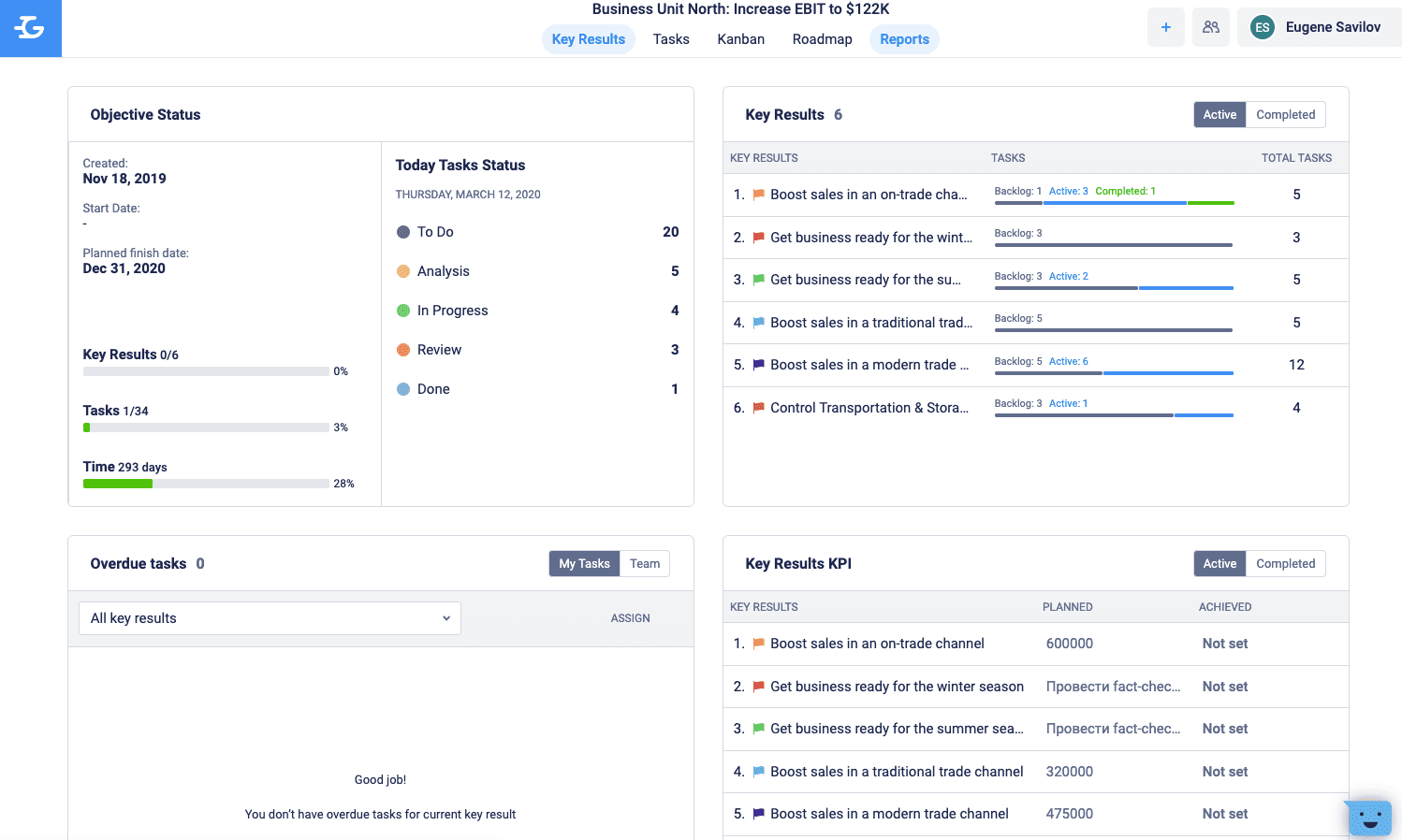
Normally, you would get to this step after you’ve achieved your Objective. At that point, let’s take a look at your progress so far and see what we can learn from it. Ask yourself the following questions - you will learn valuable lessons for your next project:
- Have you reached your Objective?
- Have you distributed your resources correctly?
- What difficulties did you encounter with the Objective, Key Results, Tasks?
- How effective was your team at reaching the Objective and Key Results?
KeepSolid Goals is a great app for companies that wish to implement the OKR process - see for yourself! You can try this web-based tool for FREE during the trial period, so check it out.
14-day free trial + 7-day money-back guarantee

